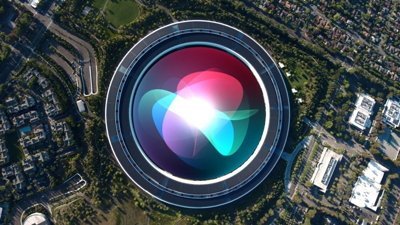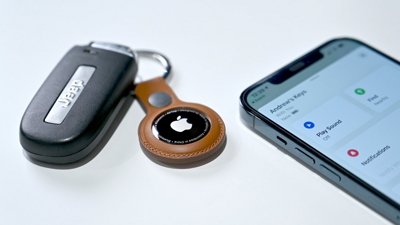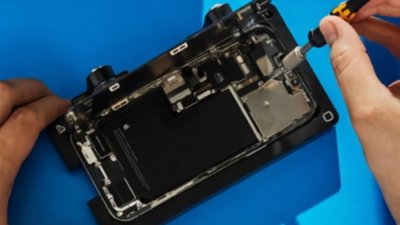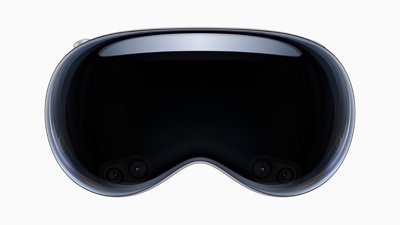Mobile processor patent suit accuses Apple of 14 violations
Apple is one of a number of companies — 22, to be exact — that are named as defendants in the suit filed by California-based MicroUnity Systems Engineering. Apple's exclusive mobile provider in the U.S., AT&T, is also targeted because it sells the iPhone 3GS and "services utilizing and software utilized by such products."
Other companies named include Acer, Google, HTC, LG, Motorola, Nokia, Palm, Qualcomm, Samsung, Spring and Texas Instruments. The suit was filed last week in a U.S. District Court in the Eastern District of Texas, where patent complaints are commonly filed in hopes of a favorable outcome.
Specifically named in the suit are the iPhone 3GS and 32GB and 64GB capacities of the iPod touch. Other devices named include the Motorola Droid, Palm Pre, Google Nexus One, and Nokia N900.
According to the company's Web site, MicroUnity was founded in 1988 when it "aimed to extend microprocessors beyond their historical role as calculating and control devices, to make them the primary media-processing engines of televisions, set-top boxes, mobile computers, cellphones, and other digital communications devices."
MicroUnity Systems Engineering has previously filed suits against Intel, Dell, Sony Computer Entertainment America, and Advanced Micro Devices. The company's Web site states those suits were settled years ago.
The 14 patents named in the suit are:
- U.S. Patent No. 5,737,547, "System for Placing Entries of an Outstanding Processor Request into a Free Pool After the Request Is Accepted by a Corresponding Peripheral Device."
- U.S. Patent No. 5,742,840, "General Purpose, Multiple Precision Parallel Operation, Programmable Media Processor."
- U.S. Patent No. 5,794,061, "General Purpose, Multiple Precision Parallel Operation, Programmable Media Processor."
- U.S. Patent No. 6,006,318 C1, "General Purpose, Dynamic Partitioning, Programmable Media Processor."
- U.S. Patent No. 6,427,190, "Configurable Cache Allowing Cache-Type and Buffer-Type Access."
- U.S. Patent No. 6,725,356 C1, "System with Wide Operand Architecture, and Method."
- U.S. Patent No. 7,213,131, "Programmable Processor and Method for Partitioned Group Element Selection Operation."
- U.S. Patent No. 7,216,217 B2, "Programmable Processor with Group Floating-Point Operations."
- U.S. Patent No. 7,260,708 B2, "Programmable Processor and Method for Partitioned Group Shift."
- U.S. Patent No. 7,353,367 B2, "System and Software for Catenated Group Shift Instruction."
- U.S. Patent No. 7,509,366 B2, "Multiplier Array Processing System with Enhanced Utilization at Lower Precision."
- U.S. Patent No. 7,653,806 B2, "Method and Apparatus for Performing Improved Group Floating-Point Operations."
- U.S. Patent No. 7,660,972 B2, "Method and Software for Partitioned Floating-Point Multiply-Add Operation."
- U.S. Patent No. 7,660,973 B2, "System and Apparatus for Group Data Operations."
Earlier this month, a separate lawsuit targeted many of the same companies over a broad range of smartphone related patents. Apple's iPhone was specifically included in the suit, which alleged infringement of patents related to e-mail syncing and Bluetooth connectivity.
In its annual Form 10-K filed with the U.S. Securities and Exchange Commission last October, Apple said it was then defending itself from more than 47 patent infringement cases, 27 of which were filed during the 2009 fiscal year. Those suits prove costly to defend, and sometimes Apple comes out on the losing end of a large payout. Last year, a Texas patent suit resulted in a 21.7 million ruling against Apple.
 Neil Hughes
Neil Hughes










 William Gallagher
William Gallagher
 Malcolm Owen
Malcolm Owen
 Amber Neely
Amber Neely

 Marko Zivkovic
Marko Zivkovic

 Andrew Orr
Andrew Orr








